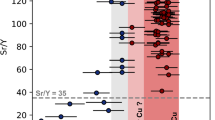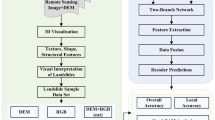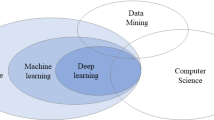Abstract
The spatial structure of geochemical patterns is influenced by various geological processes, one of which may be mineralization. Thus, analysis of spatial geochemical patterns facilitates understanding of regional metallogenic mechanisms and recognition of geochemical anomalies related to mineralization. Convolutional neural networks (CNNs) used in previous studies to extract spatial features require regular data (e.g., raster maps) as input. Due to the complex and diverse geological environment, geochemical samples are inevitably irregularly distributed and even partially missing in many spaces, leading to the inapplicability of CNN-based methods for geochemical anomaly identification. Also, interpolation from samples to regular grids often introduces uncertainties. To address these problems, this study innovatively transformed geochemical sampled point data into graphs and introduced graph learning to extract the geochemical patterns. Correspondingly, a novel framework of geochemical identification named GAUGE (recognition of Geochemical Anomalies Using Graph lEarning) is proposed. To assess the performance of the proposed method, this study recognized anomalies related to Au deposits in the Longyan area, the Wuyishan polymetallic metallogenic belt, China. For a set of regularly distributed samples, GAUGE achieved an accuracy similar to that of a traditional convolution autoencoder. More importantly, GAUGE achieved an area under the curve of 0.833, outperforming one-class support vector machine, isolation forest, autoencoder, and deep autoencoder network for a set of irregularly distributed samples by 10.6, 5.2, 4.8, and 2.5%, respectively. By introducing graph learning into geochemical anomaly recognition, this study provides a new perspective of extracting both spatial structure and compositional relationships of multivariate geochemical patterns, which can be applied directly to irregularly distributed samples in irregularly shaped regions without the need for interpolation. Such an improvement greatly enhances the applicability of machine learning methods in geochemical anomaly recognition, providing support for mineral resources evaluation and exploration.










Similar content being viewed by others
References
Ahmad, S., Lavin, A., Purdy, S., & Agha, Z. (2017). Unsupervised real-time anomaly detection for streaming data. Neurocomputing, 262, 134–147.
An, J., & Cho, S. (2015). Variational autoencoder based anomaly detection using reconstruction probability. Special Lecture on IE, 2(1), 1–18.
Bahdanau, D., Cho, K., & Bengio, Y. (2014). Neural machine translation by jointly learning to align and translate. arXiv preprint arXiv:1409.0473.
Barlow, H. B. (1989). Unsupervised learning. Neural Computation, 1(3), 295–311.
Beus, A. A., & Grigorian, S. V. (1977). Geochemical exploration methods for mineral deposits. Earth Science Reviews, 14(1), 67–69.
Bin, J. I., Zhou, T., Yuan, F., Zhang, D., Liu, L., & Liu, G. (2017). A method for identifying geochemical anomalies based on spatial autocorrelation. Science Survery Mapping, 42, 24–27.
Breunig, M.M., Kriegel, H., Ng, R.T., & Sander, J.O.R. (2000). LOF: identifying density-based local outliers. In Proceedings of the 2000 ACM SIGMOD international conference on Management of data, 93–104.
Brooks, D. B., & Andrews, P. W. (1974). Mineral Resources, Economic Growth, and World Populatic. Science, 185(4145), 13–19.
Cameron, E. M., et al. (2005). Geochemical Exploration. In R. C. Selley (Ed.), Encyclopedia of Geology (pp. 21–29). Oxford: Elsevier.
Carranza, E. J. M., & Laborte, A. G. (2015). Random forest predictive modeling of mineral prospectivity with small number of prospects and data with missing values in Abra (Philippines). Computers & Geosciences, 74, 60–70.
Chao, T. T. (1984). Use of partial dissolution techniques in geochemical exploration. Journal of Geochemical Exploration, 20(2), 101–135.
Chayes, F. (1971). Ratio correlation: a manual for students of petrology and geochemistry. University of Chicago Press.
Chen, Z.J., Cheng, Q.M., & Chen, J.G. (2009). Comparison of different models for anomaly recognition of geochemical data by using sample ranking method Earth Science—Journal of China University of Geosciences.
Chen, J., Cooke, D. R., Piquer, J. E., Selley, D., Zhang, L., & White, N. C. (2019a). Hydrothermal alteration, mineralization, and structural geology of the Zijinshan high-sulfidation Au-Cu deposit, Fujian Province. Southeast China. Economic Geology, 114(4), 639–666.
Chen, L., Guan, Q., Feng, B., Yue, H., Wang, J., & Zhang, F. (2019b). A multi-convolutional autoencoder approach to multivariate geochemical anomaly recognition. Minerals, 9(5), 270.
Chen, L., Guan, Q., Xiong, Y., Liang, J., Wang, Y., & Xu, Y. (2019c). A spatially constrained multi-autoencoder approach for multivariate geochemical anomaly recognition. Computers & Geosciences, 125, 43–54.
Chen, Y., Lu, L., & Li, X. (2014). Application of continuous restricted Boltzmann machine to identify multivariate geochemical anomaly. Journal of Geochemical Exploration, 140, 56–63.
Chen, Y., & Wu, W. (2017). Application of one-class support vector machine to quickly identify multivariate anomalies from geochemical exploration data. Geochemistry Exploration, Environment Analysis, 17(3), 231–238.
Cheng, Q. (1999). Spatial and scaling modelling for geochemical anomaly separation. Journal of Geochemical Exploration, 65(3), 175–194.
Cheng, Q., Agterberg, F. P., & Ballantyne, S. B. (1994). The separation of geochemical anomalies from background by fractal methods. Journal of Geochemical Exploration, 51(2), 109–130.
Cheng, Q., Bonham-Carter, G., Wang, W., Zhang, S., Li, W., & Qinglin, X. (2011). A spatially weighted principal component analysis for multi-element geochemical data for mapping locations of felsic intrusions in the Gejiu mineral district of Yunnan. China. Computers & Geosciences, 37(5), 662–669.
Cheng, Q., Xu, Y., & Grunsky, E. (2000). Integrated spatial and spectrum method for geochemical anomaly separation. Natural Resources Research, 9(1), 43–52.
Christmann, P. (2018). Towards a more equitable use of mineral resources. Natural Resources Research, 27(2), 159–177.
Dikang, X., Zongxia, G., & Huimin, H. (1997). Ore Formation Model and Mineral Search Model for Copper and Gold Deposits in Southeast China. China University of Geosciences Press.
Fabrigar, L. R., & Wegener, D. T. (2011). Exploratory factor analysis. Oxford University Press.
Fawcett, T. (2006). An introduction to ROC analysis. Pattern Recognition Letters, 27(8), 861–874.
Finney, D. J. (1952). Probit analysis: a statistical treatment of the sigmoid response curve. Cambridge University Press.
Ge, Y., Cheng, Q., & Zhang, S. (2005). Reduction of edge effects in spatial information extraction from regional geochemical data: a case study based on multifractal filtering technique. Computers & Geosciences, 31(5), 545–554.
Glorot, X., Bordes, A., & Bengio, Y. (2011). Deep sparse rectifier neural networks. JMLR Workshop and Conference Proceedings, 315–323.
Goodchild, M.F. (1986). Spatial autocorrelation. Geo Books.
Guan, Q., Ren, S., Chen, L., Feng, B., & Yao, Y. (2021). A spatial-compositional feature fusion convolutional autoencoder for multivariate geochemical anomaly recognition. Computers & Geosciences, 1, 104890.
Hardin, J., & Rocke, D. M. (2004). Outlier detection in the multiple cluster setting using the minimum covariance determinant estimator. Computational Statistics & Data Analysis, 44(4), 625–638.
He, Z., Xu, X., & Deng, S. (2003). Discovering cluster-based local outliers. Pattern Recognition Letters, 24(9–10), 1641–1650.
Hinton, G. E., & Salakhutdinov, R. R. (2006). Reducing the dimensionality of data with neural networks. Science, 313(5786), 504–507.
Huang, C., Liu, Q., & Zhang, K. (1999). Geophysical and geochemical characters and ore-finding pattern of the zijinshan copper-gold orefield, in Shanghang County, Fujian Province. Geology of Fujian, 4(1999), 189–201.
Jianhua, D., Jianfu, F., Jiangning, Y., & Yaling, L. (2016). Geological Characteristics and mineral resource potential of the Wuyishan Cu-Pb-Zn polymetallic metallogenic belt. Acta Geologica Sinica, 90(7), 1537–1550.
Jordan, M. I., & Mitchell, T. M. (2015). Machine learning: trends, perspectives, and prospects. Science, 349(6245), 255–260.
Kingma, D.P., & Welling, M. (2013). Auto-encoding variational bayes. arXiv preprint arXiv:1312.6114.
Kipf, T.N., & Welling, M. (2016). Semi-supervised classification with graph convolutional networks. arXiv preprint arXiv:1609.02907.
LeCun, Y., Bengio, Y., & Hinton, G. (2015). Deep learning. Nature, 521(7553), 436–444.
Li, B., & Jiang, S. (2017). Genesis of the giant Zijinshan epithermal Cu-Au and Luoboling porphyry Cu–Mo deposits in the Zijinshan ore district, Fujian Province, SE China: A multi-isotope and trace element investigation. Ore Geology Reviews, 88, 753–767.
Li, C., Ma, T., & Shi, J. (2003). Application of a fractal method relating concentrations and distances for separation of geochemical anomalies from background. Journal of Geochemical Exploration, 77(2–3), 167–175.
Li, H., Li, X., Yuan, F., Jowitt, S. M., Zhang, M., Zhou, J., Zhou, T., Li, X., Ge, C., & Wu, B. (2020). Convolutional neural network and transfer learning based mineral prospectivity modeling for geochemical exploration of Au mineralization within the Guandian-Zhangbaling area, Anhui Province. China. Applied Geochemistry, 122, 104747.
Li, S., Chen, J., & Xiang, J. (2020). Applications of deep convolutional neural networks in prospecting prediction based on two-dimensional geological big data. Neural computing and applications, 32(7), 2037–2053.
Li, X., Fan, H., Santosh, M., Hu, F., Yang, K., & Lan, T. (2013). Hydrothermal alteration associated with Mesozoic granite-hosted gold mineralization at the Sanshandao deposit, Jiaodong Gold Province, China. Ore Geology Reviews, 53, 403–421.
Lin, J., Tang, G., Xu, T., Cai, H., Lu, Q., Bai, Z., Deng, Y., Huang, M., & Jin, X. (2020). P-wave velocity structure in upper crust and crystalline basement of the Qinhang and Wuyishan Metallogenic belts: constraint from the Wanzai-Hui’an deep seismic sounding profile. Chinese Journal of Geophysics, 63(12), 4396–4409.
Liu, F.T., Ting, K.M., & Zhou, Z. (2008). Isolation forest. In 2008 eighth IEEE international conference on data mining. IEEE, 413–422.
Luo, Z., Xiong, Y., & Zuo, R. (2020). Recognition of geochemical anomalies using a deep variational autoencoder network. Applied Geochemistry, 122, 104710.
Maas, A.L., Hannun, A.Y., Ng, A.Y., & Others (2013). Rectifier nonlinearities improve neural network acoustic models. In International Conference on Machine Learning, 3.
Mao, J., Zhao, X., Ye, H., Hu, Q., Liu, K., & Yang, F. (2010). Tectono-magmatic mineralization and evolution in Wuyishan metallogenic belt. Shanghai Geology, 31(S1), 140–145.
Mathieu, L. (2018). Quantifying hydrothermal alteration: A review of methods. Geosciences, 8(7), 245.
Matschullat, J. O. R., Ottenstein, R., & Reimann, C. (2000). Geochemical background–can we calculate it? Environmental Geology, 39(9), 990–1000.
Nai-Zheng, X. U., Mao, J. R., Hai-Min, Y. E., Shen, M. T., Liu, Y. P., & Chen, L. Z. (2008). Geological characteristics and new ore-finding progress in the dapai lead and zinc deposit of yongding county, fujian province. Geology and Prospecting, 44(4), 20–23.
Paszke, A., Gross, S., Massa, F., Lerer, A., Bradbury, J., Chanan, G., Killeen, T., Lin, Z., Gimelshein, N., Antiga, L., & Others (2019). Pytorch: An imperative style, high-performance deep learning library. arXiv preprint arXiv:1912.01703.
Porwal, A., Carranza, E., & Hale, M. (2003). Artificial neural networks for mineral-potential mapping: a case study from Aravalli Province. Western India. Natural Resources Research, 12(3), 155–171.
Qiu, X.P., Lan, Y.Z., Fuzhou, Fujian, Beijing and Group, Z.M. (2010). The Key to the Study of Deep Mineralization and the Evaluation of Ore-prospecting Potential in the Zijinshan Gold and Copper Deposit. Acta Geoscientica Sinica, 31(2), 209–215.
Schölkopf, B., Platt, J. C., Shawe-Taylor, J., Smola, A. J., & Williamson, R. C. (2001). Estimating the support of a high-dimensional distribution. Neural Computation, 13(7), 1443–1471.
Singer, D. A., Berger, V. I., & Moring, B. C. (2008). Porphyry copper deposits of the world: Database and grade and tonnage models: USGS Open-File Report 2008–1155. USGS: Reston, VA, USA.
So, C., Dequan, Z., Yun, S., & Daxing, L. (1998). Alteration-mineralization zoning and fluid inclusions of the high sulfidation epithermal Cu-Au mineralization at Zijinshan, Fujian Province. China. Economic Geology, 93(7), 961–980.
Survey, D.R.C.O., & Survey, F.I.O.G. (2014). Study on the geological background of mineralization and mineralization pattern of Wuyishan mineralization zone. Geological Press.
Tang, J., Chen, Z., Fu, A.W., & Cheung, D.W. (2002). Enhancing effectiveness of outlier detections for low density patterns. Springer, 535–548.
Tang, Y., Zhao, L., Zhang, S., Gong, C., Li, G., & Yang, J. (2020). Integrating prediction and reconstruction for anomaly detection. Pattern Recognition Letters, 129, 123–130.
Tobler, W. (2004). On the first law of geography: a reply. Annals of the Association of American Geographers, 94(2), 304–310.
Twarakavi, N. K., Misra, D., & Bandopadhyay, S. (2006). Prediction of arsenic in bedrock derived stream sediments at a gold mine site under conditions of sparse data. Natural Resources Research, 15(1), 15–26.
Veli, V.C., Kovi, C, P., Cucurull, G., Casanova, A., Romero, A., Lio, P., & Bengio, Y. (2017). Graph attention networks. arXiv preprint arXiv:1710.10903.
Wang, J., & Zuo, R. (2019). Recognizing geochemical anomalies via stochastic simulation-based local singularity analysis. Journal of Geochemical Exploration, 198, 29–40.
Wold, S., Esbensen, K., & Geladi, P. (1987). Principal component analysis. Chemometrics and Intelligent Laboratory Systems, 2(1–3), 37–52.
Xie, X., Mu, X., & Ren, T. (1997). Geochemical mapping in China. Journal of Geochemical Exploration, 60(1), 99–113.
Xiong, Y., & Zuo, R. (2016). Recognition of geochemical anomalies using a deep autoencoder network. Computers & Geosciences, 86, 75–82.
Xiong, Y., & Zuo, R. (2020). Recognizing multivariate geochemical anomalies for mineral exploration by combining deep learning and one-class support vector machine. Computers & Geosciences, 140, 104484.
Xiong, Y., & Zuo, R. (2021). Robust feature extraction for geochemical anomaly recognition using a stacked convolutional denoising autoencoder. Mathematical Geosciences, 1–22.
Yousefi, M., & Carranza, E. J. M. (2015). Fuzzification of continuous-value spatial evidence for mineral prospectivity mapping. Computers & Geosciences, 74, 97–109.
Zaw, K. (2007). Mineral deposit types and metallogenic relations of South China and adjacent areas of Mainland SE Asia: implications for mineral exploration. Geology.
Zhang, Z., Cui, P., & Zhu, W. (2020). Deep learning on graphs: A survey. IEEE Transactions on Knowledge and Data Engineering.
Zhang, S., Carranza, E.J.M., Xiao, K., Wei, H., Yang, F., Chen, Z., Li, N., & Xiang, J. (2021a). Mineral prospectivity mapping based on isolation forest and random forest: implication for the existence of spatial signature of mineralization in outliers. Natural Resources Research, 1–19.
Zhang, B., Wang, X., Ye, R., Zhou, J., Liu, H., Liu, D., Han, Z., Lin, X., & Wang, Z. (2015). Geochemical exploration for concealed deposits at the periphery of the Zijinshan copper–gold mine, southeastern China. Journal of Geochemical Exploration, 157, 184–193.
Zhang, C., & Zuo, R. (2021). Recognition of multivariate geochemical anomalies associated with mineralization using an improved generative adversarial network. Ore Geology Reviews, 136, 104264.
Zhang, C., Zuo, R., & Xiong, Y. (2021a). Detection of the multivariate geochemical anomalies associated with mineralization using a deep convolutional neural network and a pixel-pair feature method. Applied Geochemistry, 130, 104994.
Zhang, D. Q., Feng, C. Y., Li, D. X., She, H. Q., & Dong, Y. J. (2005). The evolution of ore-forming fluids in the porphyry-epithermal metallogenic system of Zijinshan area. Acta Geoscientica Sinica, 26(2), 127–136.
Zhang, S., Carranza, E. J. M., Wei, H., Xiao, K., Yang, F., Xiang, J., Zhang, S., & Xu, Y. (2021b). Data-driven mineral prospectivity mapping by joint application of unsupervised convolutional auto-encoder network and supervised convolutional neural network. Natural Resources Research, 30(2), 1011–1031.
Zhao, P. D. (2002). Three-component" quantitative resource prediction and assessments: theory and practice of digital mineral prospecting. Earth Science-Journal of China university of Geosciences, 27(5), 482–489.
Zhou, J., Cui, G., Zhang, Z., Yang, C., Liu, Z., Wang, L., Li, C., & Sun, M. (2018). Graph neural networks: a review of methods and applications. arXiv preprint arXiv:1812.08434.
Zong, B., Song, Q., Min, M.R., Cheng, W., Lumezanu, C., Cho, D., & Chen, H. (2018). Deep autoencoding gaussian mixture model for unsupervised anomaly detection. In International conference on learning representations.
Zuo, R., Kreuzer, O.P., Wang, J., Xiong, Y., Zhang, Z., & Wang, Z. (2021). Uncertainties in GIS-based mineral prospectivity mapping: Key types, potential impacts and possible solutions. Natural Resources Research, 1–21.
Zuo, R. (2017). Machine learning of mineralization-related geochemical anomalies: a review of potential methods. Natural Resources Research, 26(4), 457–464.
Zuo, R., & Carranza, E. J. M. (2011). Support vector machine: a tool for mapping mineral prospectivity. Computers & Geosciences, 37(12), 1967–1975.
Zuo, R., & Xiong, Y. (2020). Geodata science and geochemical mapping. Journal of Geochemical Exploration, 209, 106431.
Zuo, R., Xiong, Y., Wang, J., & Carranza, E. J. M. (2019). Deep learning and its application in geochemical mapping. Earth-Science Reviews, 192, 1–14.
Acknowledgments
Thanks are due to Dr. John Carranza’s, Dr. Renguang Zuo’s and two anonymous reviewers’ comments and suggestions, which helped us improve this manuscript. This work was supported by the National Key Research and Development Program of China (Grant No. 2019YFB2102903), the National Natural Science Foundation of China (Grant No. 42171466, 41801306 and U1711267), the Scientific Research Program of the Department of Natural Resources of Hubei Province (Grant No. ZRZY2021KJ02), the MOST Special Fund from the State Key Laboratory of Geological Processes and Mineral Resources, China University of Geosciences (Grant No. MSFGPMR03-4), the “CUG Scholar” Scientific Research Funds at China University of Geosciences (Wuhan) (Grant No. 2022034), and the Zhejiang Provincial Natural Science Foundation (Grant No. LY18D010001).
Author information
Authors and Affiliations
Corresponding author
Ethics declarations
Conflict of Interest
No conflict of interest exists in the submission of this manuscript.
Appendices
Appendix
Global Moran′s I Method for Spatial Autocorrelation
Spatial autocorrelation indicates a significant spatial distribution pattern in space through the degree of correlation between spatial objects in a region. Global Moran′s I is a common metric for quantitative representation of spatial autocorrelation (Goodchild, 1986). Its mathematical equation is:
where \(x_{i}\), \(x_{j}\) are sampling values at sampling point \(i\) and \(j\), respectively; \(\overline{x}\) is the mean value; \(w_{i,j}\) denotes weights representing the proximity relationship between sampling points \(i\) and \(j\). Generally, \(w_{i,j}\) is related to the distance band selection, and here we calculated the spatial weights for samples only within distance K. \(S_{0}\) is the sum of all elements of the spatial weight matrix \({\text{W}}\). \(I\) is Global Moran’s I value, which ranges from -1 to 1. The closer it is to 1, the stronger the spatial autocorrelation is.
Activation Functions in GAT
The activation function is a function that maps inputs to outputs in neurons. It is important for deep learning models to extract and understand complex and nonlinear patterns. Sigmoid, LeakyReLU, and ReLU are used in GAUGE, and their mathematical equations are as follows:
Sigmoid (Finney, 1952):
ReLU (Glorot et al., 2011):
LeakyReLU (Maas et al., 2013):
where \(x\) indicates the input of activation function. \(Sigmoid\left( x \right)\), \(Relu\left( x \right)\), and \(LeakyReLU(x)\) are the output of the respective functions. The \(a of LeakyReLU\) defaults to 0.01.
Rights and permissions
About this article
Cite this article
Guan, Q., Ren, S., Chen, L. et al. Recognizing Multivariate Geochemical Anomalies Related to Mineralization by Using Deep Unsupervised Graph Learning. Nat Resour Res 31, 2225–2245 (2022). https://doi.org/10.1007/s11053-022-10088-x
Received:
Accepted:
Published:
Issue Date:
DOI: https://doi.org/10.1007/s11053-022-10088-x




